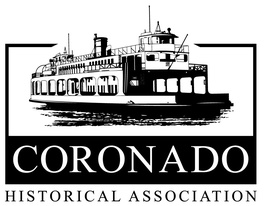- 619.435.7242
- 1100 Orange Avenue, Coronado CA 92118
Coronado and the Navy
Coronado and the Navy from Coronado Historical Association on Vimeo.
The History of the Coronado Naval Base
Coronado is a popular city not only for its small-town like qualities but even more so for the military personnel who reside on the island and the Navy bases that resides here too. Coronado is the home of the Naval Amphibious Base and the Naval Air Station Base; both are very popular for the work they do. Both bases reside on the north side of the island, commonly known as “North Island”. The land was first bought in 1886, however, the north part of the island was never developed, therefore the Government bought the north side of the island in order to utilize it for military usage. The Navy first set up camp on Coronado as early as 1911, however, it was not established a Naval Air Station until 1917, and then on August 15, 1963, it was granted the name of “The Birthplace of Naval Aviation”. The Navy shared North Island with the Army until 1937, when the Army left and then the Navy continued to use North Island as a base and they continued to expand. Many aviation milestones originated from North Island including the pusher aircraft in 1914, the first seaplane flight in 1911, the first mid-air refueling in 1923, the first non- stop transcontinental flight in 1923 and also the first parachute jump made in San Diego area in 1914. In June 1943, the Secretary of the Navy authorized the establishment of the Amphibious Training Base in the San Diego area to meet wartime’s demands for trained landing craft crews. These crews were deployed to the South Pacific area of operations, where their successful and historical efforts were contributory to the conclusion of World War II. The Naval Amphibious Base was formally commissioned in January 1944. In 1946, the base was renamed Naval Amphibious Base (NAB) Coronado and its primary mission was changed to that of providing major administrative and logistical support to the amphibious units which are located on the base. The base also conducts research and tests of newly developed amphibious equipment. The governments choose this location due that it provided a shore base for the operations, training, and support of the naval amphibious units on the West Coast. It is one of the only two Naval Amphibious bases in the United States. It is approximately 1,000 acres and is composed of the main base, training beaches, California least tern preserve, recreational marina, enlisted family housing, and a state park. Most of the base is composed of the dredged part of the San Diego Bay that was dredged in the 1940s. During World War II North Island was the major continental U.S. base supporting the operating forces that were in the Pacific. Those forces included over a dozen aircraft carriers, the Coast Guard, Army, Marines and Seabees. The City of Coronado became home to most of the aircraft factory workers and dependents of the expanded base which was operating around the clock. Major USO entertainment shows and bond drives were held weekly at the Ship’s Service auditorium to entertain the military personnel, which was later replaced by the 2,100 seat Lowry Theater. Big band singers and movie stars were stationed in Coronado or on ships homeported here during the war years including Douglas Fairbanks Jr., future television cowboy star of the 1950s and 1960s, Guy Madison, who starred as Wild Bill Hickok, Seaman Bob Mosely, a lifeguard at the NAS crews’ pool. Stars like the Marx Brothers and Bob Hope appeared regularly at USO shows at the auditorium.

Become a member
Join us and help preserve and share Coronado's unique and wonderful history with intriguing exhibits and innovative programs for all ages.
MEMBERSHIP BENEFITS INCLUDE:
- Two complimentary tickets to our Historic Walking Tour of Coronado
- Invites to members-only events
- ...and much more!